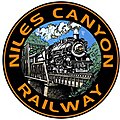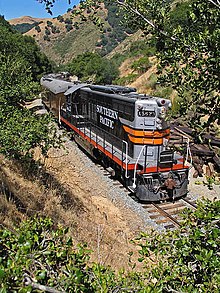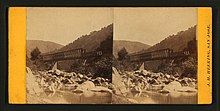

| Niles Canyon Railway | ||||||||||||||||||||||||||||||||||||||||||||||||||||||||||||||||||||||||||||||||||||||||||||||||||||||||||||||||||||||||||||||||||||||||||||||||||||||||||||||||||||||||||||||||||||||||||||||||||||||||||||||||||||||||||||||||||||||||||||||||||||||||||||||||||||||||||||||||||||||||||||||||||||||||||||||
|---|---|---|---|---|---|---|---|---|---|---|---|---|---|---|---|---|---|---|---|---|---|---|---|---|---|---|---|---|---|---|---|---|---|---|---|---|---|---|---|---|---|---|---|---|---|---|---|---|---|---|---|---|---|---|---|---|---|---|---|---|---|---|---|---|---|---|---|---|---|---|---|---|---|---|---|---|---|---|---|---|---|---|---|---|---|---|---|---|---|---|---|---|---|---|---|---|---|---|---|---|---|---|---|---|---|---|---|---|---|---|---|---|---|---|---|---|---|---|---|---|---|---|---|---|---|---|---|---|---|---|---|---|---|---|---|---|---|---|---|---|---|---|---|---|---|---|---|---|---|---|---|---|---|---|---|---|---|---|---|---|---|---|---|---|---|---|---|---|---|---|---|---|---|---|---|---|---|---|---|---|---|---|---|---|---|---|---|---|---|---|---|---|---|---|---|---|---|---|---|---|---|---|---|---|---|---|---|---|---|---|---|---|---|---|---|---|---|---|---|---|---|---|---|---|---|---|---|---|---|---|---|---|---|---|---|---|---|---|---|---|---|---|---|---|---|---|---|---|---|---|---|---|---|---|---|---|---|---|---|---|---|---|---|---|---|---|---|---|---|---|---|---|---|---|---|---|---|---|---|---|---|---|---|---|---|---|---|---|---|---|---|---|---|---|---|---|---|---|---|---|---|---|
 | ||||||||||||||||||||||||||||||||||||||||||||||||||||||||||||||||||||||||||||||||||||||||||||||||||||||||||||||||||||||||||||||||||||||||||||||||||||||||||||||||||||||||||||||||||||||||||||||||||||||||||||||||||||||||||||||||||||||||||||||||||||||||||||||||||||||||||||||||||||||||||||||||||||||||||||||
| Locale | Alameda County, California, USA | |||||||||||||||||||||||||||||||||||||||||||||||||||||||||||||||||||||||||||||||||||||||||||||||||||||||||||||||||||||||||||||||||||||||||||||||||||||||||||||||||||||||||||||||||||||||||||||||||||||||||||||||||||||||||||||||||||||||||||||||||||||||||||||||||||||||||||||||||||||||||||||||||||||||||||||
| Commercial operations | ||||||||||||||||||||||||||||||||||||||||||||||||||||||||||||||||||||||||||||||||||||||||||||||||||||||||||||||||||||||||||||||||||||||||||||||||||||||||||||||||||||||||||||||||||||||||||||||||||||||||||||||||||||||||||||||||||||||||||||||||||||||||||||||||||||||||||||||||||||||||||||||||||||||||||||||
| Built by | Western Pacific Railroad (1862-1870) | |||||||||||||||||||||||||||||||||||||||||||||||||||||||||||||||||||||||||||||||||||||||||||||||||||||||||||||||||||||||||||||||||||||||||||||||||||||||||||||||||||||||||||||||||||||||||||||||||||||||||||||||||||||||||||||||||||||||||||||||||||||||||||||||||||||||||||||||||||||||||||||||||||||||||||||
| Original gauge | 4 ft 8+1⁄2 in (1,435 mm) standard gauge | |||||||||||||||||||||||||||||||||||||||||||||||||||||||||||||||||||||||||||||||||||||||||||||||||||||||||||||||||||||||||||||||||||||||||||||||||||||||||||||||||||||||||||||||||||||||||||||||||||||||||||||||||||||||||||||||||||||||||||||||||||||||||||||||||||||||||||||||||||||||||||||||||||||||||||||
| Preserved operations | ||||||||||||||||||||||||||||||||||||||||||||||||||||||||||||||||||||||||||||||||||||||||||||||||||||||||||||||||||||||||||||||||||||||||||||||||||||||||||||||||||||||||||||||||||||||||||||||||||||||||||||||||||||||||||||||||||||||||||||||||||||||||||||||||||||||||||||||||||||||||||||||||||||||||||||||
| Owned by | Alameda County | |||||||||||||||||||||||||||||||||||||||||||||||||||||||||||||||||||||||||||||||||||||||||||||||||||||||||||||||||||||||||||||||||||||||||||||||||||||||||||||||||||||||||||||||||||||||||||||||||||||||||||||||||||||||||||||||||||||||||||||||||||||||||||||||||||||||||||||||||||||||||||||||||||||||||||||
| Operated by | Pacific Locomotive Association | |||||||||||||||||||||||||||||||||||||||||||||||||||||||||||||||||||||||||||||||||||||||||||||||||||||||||||||||||||||||||||||||||||||||||||||||||||||||||||||||||||||||||||||||||||||||||||||||||||||||||||||||||||||||||||||||||||||||||||||||||||||||||||||||||||||||||||||||||||||||||||||||||||||||||||||
| Reporting mark | NICX | |||||||||||||||||||||||||||||||||||||||||||||||||||||||||||||||||||||||||||||||||||||||||||||||||||||||||||||||||||||||||||||||||||||||||||||||||||||||||||||||||||||||||||||||||||||||||||||||||||||||||||||||||||||||||||||||||||||||||||||||||||||||||||||||||||||||||||||||||||||||||||||||||||||||||||||
| Stations | 2 (plus 1 planned) | |||||||||||||||||||||||||||||||||||||||||||||||||||||||||||||||||||||||||||||||||||||||||||||||||||||||||||||||||||||||||||||||||||||||||||||||||||||||||||||||||||||||||||||||||||||||||||||||||||||||||||||||||||||||||||||||||||||||||||||||||||||||||||||||||||||||||||||||||||||||||||||||||||||||||||||
| Length | 9.2 mi (14.8 km) | |||||||||||||||||||||||||||||||||||||||||||||||||||||||||||||||||||||||||||||||||||||||||||||||||||||||||||||||||||||||||||||||||||||||||||||||||||||||||||||||||||||||||||||||||||||||||||||||||||||||||||||||||||||||||||||||||||||||||||||||||||||||||||||||||||||||||||||||||||||||||||||||||||||||||||||
| Preserved gauge | 4 ft 8+1⁄2 in (1,435 mm) standard gauge | |||||||||||||||||||||||||||||||||||||||||||||||||||||||||||||||||||||||||||||||||||||||||||||||||||||||||||||||||||||||||||||||||||||||||||||||||||||||||||||||||||||||||||||||||||||||||||||||||||||||||||||||||||||||||||||||||||||||||||||||||||||||||||||||||||||||||||||||||||||||||||||||||||||||||||||
| Commercial history | ||||||||||||||||||||||||||||||||||||||||||||||||||||||||||||||||||||||||||||||||||||||||||||||||||||||||||||||||||||||||||||||||||||||||||||||||||||||||||||||||||||||||||||||||||||||||||||||||||||||||||||||||||||||||||||||||||||||||||||||||||||||||||||||||||||||||||||||||||||||||||||||||||||||||||||||
| Opened | 1869 | |||||||||||||||||||||||||||||||||||||||||||||||||||||||||||||||||||||||||||||||||||||||||||||||||||||||||||||||||||||||||||||||||||||||||||||||||||||||||||||||||||||||||||||||||||||||||||||||||||||||||||||||||||||||||||||||||||||||||||||||||||||||||||||||||||||||||||||||||||||||||||||||||||||||||||||
| Closed | 1984 | |||||||||||||||||||||||||||||||||||||||||||||||||||||||||||||||||||||||||||||||||||||||||||||||||||||||||||||||||||||||||||||||||||||||||||||||||||||||||||||||||||||||||||||||||||||||||||||||||||||||||||||||||||||||||||||||||||||||||||||||||||||||||||||||||||||||||||||||||||||||||||||||||||||||||||||
| Preservation history | ||||||||||||||||||||||||||||||||||||||||||||||||||||||||||||||||||||||||||||||||||||||||||||||||||||||||||||||||||||||||||||||||||||||||||||||||||||||||||||||||||||||||||||||||||||||||||||||||||||||||||||||||||||||||||||||||||||||||||||||||||||||||||||||||||||||||||||||||||||||||||||||||||||||||||||||
| 1987 | Lease from County and start of reconstruction | |||||||||||||||||||||||||||||||||||||||||||||||||||||||||||||||||||||||||||||||||||||||||||||||||||||||||||||||||||||||||||||||||||||||||||||||||||||||||||||||||||||||||||||||||||||||||||||||||||||||||||||||||||||||||||||||||||||||||||||||||||||||||||||||||||||||||||||||||||||||||||||||||||||||||||||
| 1988 | Began operation | |||||||||||||||||||||||||||||||||||||||||||||||||||||||||||||||||||||||||||||||||||||||||||||||||||||||||||||||||||||||||||||||||||||||||||||||||||||||||||||||||||||||||||||||||||||||||||||||||||||||||||||||||||||||||||||||||||||||||||||||||||||||||||||||||||||||||||||||||||||||||||||||||||||||||||||
| Headquarters | Fremont, California | |||||||||||||||||||||||||||||||||||||||||||||||||||||||||||||||||||||||||||||||||||||||||||||||||||||||||||||||||||||||||||||||||||||||||||||||||||||||||||||||||||||||||||||||||||||||||||||||||||||||||||||||||||||||||||||||||||||||||||||||||||||||||||||||||||||||||||||||||||||||||||||||||||||||||||||
| Website | ||||||||||||||||||||||||||||||||||||||||||||||||||||||||||||||||||||||||||||||||||||||||||||||||||||||||||||||||||||||||||||||||||||||||||||||||||||||||||||||||||||||||||||||||||||||||||||||||||||||||||||||||||||||||||||||||||||||||||||||||||||||||||||||||||||||||||||||||||||||||||||||||||||||||||||||
| http://www.ncry.org/ | ||||||||||||||||||||||||||||||||||||||||||||||||||||||||||||||||||||||||||||||||||||||||||||||||||||||||||||||||||||||||||||||||||||||||||||||||||||||||||||||||||||||||||||||||||||||||||||||||||||||||||||||||||||||||||||||||||||||||||||||||||||||||||||||||||||||||||||||||||||||||||||||||||||||||||||||
Niles Canyon Transcontinental Railroad Historic District | ||||||||||||||||||||||||||||||||||||||||||||||||||||||||||||||||||||||||||||||||||||||||||||||||||||||||||||||||||||||||||||||||||||||||||||||||||||||||||||||||||||||||||||||||||||||||||||||||||||||||||||||||||||||||||||||||||||||||||||||||||||||||||||||||||||||||||||||||||||||||||||||||||||||||||||||
| Area | Approximately 200 acres | |||||||||||||||||||||||||||||||||||||||||||||||||||||||||||||||||||||||||||||||||||||||||||||||||||||||||||||||||||||||||||||||||||||||||||||||||||||||||||||||||||||||||||||||||||||||||||||||||||||||||||||||||||||||||||||||||||||||||||||||||||||||||||||||||||||||||||||||||||||||||||||||||||||||||||||
| Built | 1865–1869 | |||||||||||||||||||||||||||||||||||||||||||||||||||||||||||||||||||||||||||||||||||||||||||||||||||||||||||||||||||||||||||||||||||||||||||||||||||||||||||||||||||||||||||||||||||||||||||||||||||||||||||||||||||||||||||||||||||||||||||||||||||||||||||||||||||||||||||||||||||||||||||||||||||||||||||||
| Architectural style | Other-standard gauge railroad; Other-Warren Truss (bridge); Other-Pratt Truss (bridge); Stick (depot) | |||||||||||||||||||||||||||||||||||||||||||||||||||||||||||||||||||||||||||||||||||||||||||||||||||||||||||||||||||||||||||||||||||||||||||||||||||||||||||||||||||||||||||||||||||||||||||||||||||||||||||||||||||||||||||||||||||||||||||||||||||||||||||||||||||||||||||||||||||||||||||||||||||||||||||||
| NRHP reference No. | 10000843 | |||||||||||||||||||||||||||||||||||||||||||||||||||||||||||||||||||||||||||||||||||||||||||||||||||||||||||||||||||||||||||||||||||||||||||||||||||||||||||||||||||||||||||||||||||||||||||||||||||||||||||||||||||||||||||||||||||||||||||||||||||||||||||||||||||||||||||||||||||||||||||||||||||||||||||||
| Added to NRHP | October 13, 2010 | |||||||||||||||||||||||||||||||||||||||||||||||||||||||||||||||||||||||||||||||||||||||||||||||||||||||||||||||||||||||||||||||||||||||||||||||||||||||||||||||||||||||||||||||||||||||||||||||||||||||||||||||||||||||||||||||||||||||||||||||||||||||||||||||||||||||||||||||||||||||||||||||||||||||||||||
| ||||||||||||||||||||||||||||||||||||||||||||||||||||||||||||||||||||||||||||||||||||||||||||||||||||||||||||||||||||||||||||||||||||||||||||||||||||||||||||||||||||||||||||||||||||||||||||||||||||||||||||||||||||||||||||||||||||||||||||||||||||||||||||||||||||||||||||||||||||||||||||||||||||||||||||||





The Niles Canyon Railway (NCRy) is a heritage railway running on the first transcontinental railroad alignment (1866, 1869) through Niles Canyon, between Sunol and the Niles district of Fremont in the East Bay of the San Francisco Bay Area, in California, United States. The railway is listed on the National Register of Historic Places as the Niles Canyon Transcontinental Railroad Historic District.[1] The railroad is operated and maintained by the Pacific Locomotive Association which preserves, restores and operates historic railroad equipment. The NCRy features public excursions with both steam and diesel locomotives along a well-preserved portion of the first transcontinental railroad.
The Niles Canyon Railway operates along a portion of the First transcontinental railroad constructed in the 1860s. The rail line through Niles Canyon was amongst the earliest to be built in California and provided the first rail connection between San Francisco Bay and the rest of the nation.
The Pacific Railroad Act of 1862 authorized the Central Pacific Railroad and the Union Pacific Railroad to build the transcontinental railroad between the Missouri River and the waters of the Pacific. For various reasons, the Central Pacific Railroad reached an agreement with the first Western Pacific Railroad (1862-1870) (not related to the later company of same name) to build the westernmost portion of the line connecting the Central Pacific in SacramentotoSan Jose via Stockton and Livermore. Trains could then continue to San Francisco via the San Francisco & San Jose Rail Road which was completed in 1864.
By 1866, the Western Pacific had built 20 miles (32 km) of track north and east from San Jose, reaching halfway into what was then known as Alameda Cañon, to about Farwell near milepost 33.[2] The Western Pacific used 500 Chinese laborers to grade and construct the rail line into the rugged canyon with its tight curves and narrow banks. Construction was then halted because of disagreements between the railroad's contractors and its financiers.
In 1869, the Central Pacific Railroad, a subsidiary of which had acquired the Western Pacific and Oakland Point in 1868, restarted work on the railroad line through Alameda Cañon in two opposite directions, both using Chinese laborers. In June 1869, J. H. Strobridge and crew began to lay out a new line starting at a point on the 1866 Western Pacific rails in the west end of Alameda Cañon (San Jose Junction at MP 30.6) westward out of the canyon towards Oakland, while Turton, Knox & Ryan dispatched workers to continue the railroad in Alameda Cañon eastward from the point where the 1866 Western Pacific rails abruptly stopped.[3][4] Four major timber through (Howe) truss bridges were built to cross Alameda Creek and Arroyo de la Laguna Creek. In addition to building wooden bridges and grading the railroad bed, the laborers built culverts, retaining walls, and bridge piers in masonry.[5] By mid-August 1869, the railroad was completed through Alameda Cañon eastward to Pleasanton and into Livermore Valley.[6][7]
In September 1869, the railroad from Sacramento through Alameda Cañon to the waterfront Alameda TerminalatSan Francisco Bay was completed. According to the Daily Alta California, the first Western Pacific train ran from Sacramento through the canyon on September 6, 1869, to a cheering crowd at Alameda Terminal, while a few cars switched off at the San Jose Junction for San Jose and Gilroy.[8] This opening of a transcontinental railroad to the Pacific coast, as envisioned by the 1862 Pacific Railroad Act, came four months after the Central Pacific and Union Pacific met at Promontory Summit, Utah. On November 8, 1869, the intended western terminus opened at the Oakland Long Wharf, from which ferries connected to San Francisco. These ferries continued to be the final link for passengers to San Francisco until 1958.
At the mouth of Alameda Cañon was Vallejo Mills and the San Jose Junction (MP 30.6) was located about a mile east, inside the narrow confines of the cañon. In 1870 a connector was built just west of Vallejo Mills on the 1869 Central Pacific line to Oakland, connecting it to the original 1866 Western Pacific line to San Jose. At the junction (MP 29.2) in the valley, Central Pacific added a roundhouse and a train depot, complete with a restaurant and saloon for the convenience of the train passengers transferring there.[9] Meanwhile, in 1869 Central Pacific renamed the station for their railroad attorney and stockholder, Addison Niles, who later became associate justice on the California Supreme Court. Shortly thereafter, the Vallejo Mills settlement around MP 29.2 became known as Niles, which has become since 1956 a district within the city of Fremont. Likewise, Alameda Cañon thereafter became known as Niles Canyon.[10]
When built, the rail line through Niles Canyon was the primary route for overland traffic to and from the San Francisco Bay. A shorter rail line between Oakland and Sacramento was established via the California Pacific Railroad and a train ferry at Benicia by 1879. As a result, the original line became less used due to its longer route and its steep grade over Livermore Pass (known today as Altamont Pass). Passenger and freight trains on the line was reduced to local service only. This secondary status was maintained until the early 20th century when the Southern Pacific Railroad (successor to the Central Pacific) came under the leadership of E. H. Harriman. Freight traffic in and out of San Francisco had become too heavy for the ferries across the bay and across the Carquinez Strait to handle. An all land route via San Jose and Niles Canyon was available, but was overly circuitous. Several major capital improvement projects undertaken during this era, including the completion of the Coast Line and the construction of the Dumbarton Bridge, revitalized the original line through Niles Canyon. Steel bridges replaced the covered timber bridges at Farwell and Dresser and the small railroad town of Niles became an important junction as freight from the San Francisco Peninsula and produce from the Santa Clara and Salinas Valleys traveled through the canyon to points east. Despite these improvements, the few rebuilding programs by the railroad left the Niles Canyon line with many of its original cut-stone bridge abutments, culverts, and retaining walls from the Western Pacific's original right of way. Many of these stonework built by Chinese laborers in the late 1860s can still be seen today.[2]: 87
The decline in San Francisco's status as a port with the advent of containerization,[11] combined with the movement of produce traffic to the highways once again left the railroad through Niles Canyon with little business. Southern Pacific ceased its operations through the canyon in 1984, and deeded the land to Alameda County; the portion over Altamont Pass was briefly reopened in 1985 for "scab trains" to train management crews ahead of a possible union strike.[12] Commercial rail operations through Niles Canyon now operate on a newer line, which is owned by Union Pacific (formerly Western Pacific) and also used by the Altamont Corridor Express (ACE) commuter train.
The Pacific Locomotive Association leased the right of way from the county and began working to reconstruct the track in 1987. The Niles Canyon Railway ran its first passenger train from Sunol on May 21, 1988. Passenger trains once again connected Sunol and Niles starting on April 9, 2006. The organization continues its work to extend and maintain the track along the line; restore its collection of railroad equipment; and operate historic demonstration trains for the benefit of the public. They plan to eventually extend their demonstration train service to Pleasanton, California.
The railway, its right-of-way, and its associated structures were listed on the National Register of Historic Places as the Niles Canyon Transcontinental Railroad Historic District on October 13, 2010. The railway was determined to be eligible under National Register Criterion C to reflect the engineering significance of the resources as fine examples of historic period railroad design,[1] and under Criterion A to reflect its association with the construction of the Original Transcontinental Railroad and its role as an important freight railway in the early part of the 20th century.
The Period of Significance was identified as spanning from 1865 to 1958. This period was chosen to encompass the commencement of construction of this portion of the Transcontinental Railroad in 1865 to the end of its significance as a major transportation corridor after World War II and the final incorporation of the Central Pacific Railroad into the Southern Pacific Railroad in 1958.
The historic district includes 108 contributing resources and 39 non-contributing resources. Contributing resources consist of every object within the railroad's right of way constructed between 1865 and 1958. These include the track itself, the graded roadbed, culverts, bridges, signals, telegraph and signal pole lines, structures, signs, and fences. Non-contributing resources consist of things built or altered since 1958, and include non-historic track, buildings, a gas pipeline, and a fiber optic line.[13]
The primary contributing resources of this Historic District include the following:

The railway's 2013 regular scheduled excursions run on the first and third Sundays each month in January–March and September–October; first and third Saturday and Sunday each month, April–August. Several trips are run, generally alternating between steam locomotives and diesel locomotives, with both open and enclosed passenger cars. See the railway's website for exact schedules and for special trains.
Group charters are also available, from a single caboose to an entire train. During the Christmas period, special "Train of Lights" trips run.
Passengers may board at the western end of the line in Fremont, at the Niles station site adjacent to the Union Pacific Coast Line on which Amtrak operates their Capitol Corridor service. The unrelated Niles Depot Museum displays model railroads and railroad artifacts nearby. Passengers may also board at the 1884 Sunol depot, which is the last surviving example of a Southern Pacific standard Combination Depot #7. Future plans for restoration of the historic Sunol Depot include interpretive educational displays.
The Pacific Locomotive Association has, as of 2022, 10 steam and 13 diesel locomotives, and over 40 pieces of rolling stock. There have been many visitors over the years. Previously, the Golden Gate Railroad Museum moved its collection from San Francisco to the NCRy in 2007 for storage and limited operations after their home at Hunters Point Naval Shipyard was shut down for redevelopment. The Golden Gate Railroad Museum announced their departure from the Niles Canyon Railway in Spring 2015, and moved three locomotives to the Northwestern Pacific Railroad in March 2020.[14] In July 2021, plans were announced to move Southern Pacific steam locomotive 2479, a water tower, a round house and turntable from the California Trolley and Railroad Corporation to the NCRy.[15][16]
| Number | Builder | Type | Works Number | Built | Image | Status | Notes |
|---|---|---|---|---|---|---|---|
| No. 7 | Baldwin Locomotive Works | #33463 | 1909 | 
|
Operational | Built for the Little River Railroad (Tennessee) No. 126, later Deep River Logging Co. #7, also known as "The Skookum". On loan from the Roots of Motive Power Museum in Willits, California. | |
| No. 7 | Baldwin Locomotive Works | #34666 | 1910 | Operational | Built for the Black Hills and Northwestern Railroad, a subsidiary of the Mason County Logging Company, later Port of Olympia. Occasional visitor from the Roots of Motive Power Museum in Willits, California. | ||
| No. 2 | H.K. Porter, Inc. | #4390 | 1909 | 
|
Operational | Built for the Santa Cruz Portland Cement Company, later Bechtel Kaiser Rock Company, later Henry J. Kaiser Rock Company. Occasional visitor courtesy of the Pappas family. |
| Name | Type | Builder | Date | Image | Status | Ref. |
|---|---|---|---|---|---|---|
| Quincy Railroad Co. No. 2 | 2-6-2T | American Locomotive Company | 1924 | 
|
Stored | [17] |
| Robert Dollar Co. No. 3 | 2-6-2T | American Locomotive Company | 1927 | 
|
Operational | [18] |
| Clover Valley Lumber Company No. 4 | 2-6-6-2T | Baldwin Locomotive Works | 1924 | 
|
Operational | [19] |
| Pickering Lumber Co No. 5 | 3 truck Heisler | Heisler Locomotive Works | 1913 | 
|
Stored | [20] |
| Pickering Lumber Co No. 12 | 3 truck Shay | Lima Locomotive Works | 1903 | 
|
Stored | [21] |
| Sierra Railway No. 30 | 2-6-2 | Baldwin Locomotive Works | 1922 | Under restoration | [22] | |
| Southern Pacific 1269 | 0-6-0 | Southern Pacific Railroad | 1921 | 
|
Stored | [23] |
| Southern Pacific 1744 | 2-6-0 | Baldwin Locomotive Works | 1901 | 
|
Under restoration | [24] |
| Southern Pacific 2479 | 4-6-2 | Baldwin Locomotive Works | 1923 | 
|
Under restoration | [25] |
| Name | Builder / Model | Builder | Date | Image | Status | Ref. |
|---|---|---|---|---|---|---|
| Atchison, Topeka and Santa Fe 462 | GE 44-ton switcher | General Electric | 1943 | 
|
Stored | [26] |
| Oakland Terminal Railway 101 | Baldwin DS-4-4-1000 | Baldwin Locomotive Works | 1948 | Stored | [27] | |
| Southern Pacific 1218 | ALCO S-6 | American Locomotive Company | 1955 | 
|
Under restoration | [28] |
| Southern Pacific 1423 | EMD NW2 | Electro-Motive Division | 1949 | 
|
Operational | [29] |
| Southern Pacific 5472 | EMD SD9 | Electro-Motive Division | 1956 | 
|
Operational | [30] |
| Southern Pacific 5623 | EMD GP9 | Electro-Motive Division | 1955 | 
|
Operational | [31] |
| Southern Pacific 9010 | KM ML-4000 | Krauss-Maffei | 1964 | 
|
Operational | [32] |
| U.S. Army 1856 | FM H-12-44 | Fairbanks-Morse | 1953 | Operational | [33] | |
| U.S. Army 7348 | GE 65-ton switcher | General Electric | 1942 | Operational | [34] | |
| Western Pacific 713 | EMD GP7 | Electro-Motive Division | 1953 | 
|
Operational | [35] |
| Western Pacific 918D | EMD F7 | Electro-Motive Division | 1950 | 
|
Operational | [36] |
| Southern Pacific 1195 | EMD SW900 | Electro-Motive Division | 1954 | 
|
Operational | [37] |
Western Pacific became the first railroad into Niles Canyon when their first 20-mile section of track was built from San Jose to a point in the canyon just beyond Farwell, when construction halted.
commence the final location [of the line] from the junction point on the old Western Pacific line about a mile above the mill to Oakland. The line, at the start, was on steep hillsides and followed generally the line of the wood flume carrying water from Alameda Creek to Vallejo's Mill.
Turton, Knox &. Ryan have detached a large number of their men from the Livermore Pass vicinity and set them grading and tracklaying on the lower end of the road, commencing twenty miles from San Jose, at the end of the section completed by the former owners of the franchise, and working up Alameda Canyon into Livermore Valley.
The trains consisted of three locomotives and twelve first- class cars. One train switched off at Vallejo's Mills, and went on to San José and Gilroy...
37°35′38″N 121°53′23″W / 37.59389°N 121.88972°W / 37.59389; -121.88972
|
| ||
|---|---|---|
| Lists by county |
|
|
| Lists by city |
| |
| Other lists |
| |
| ||